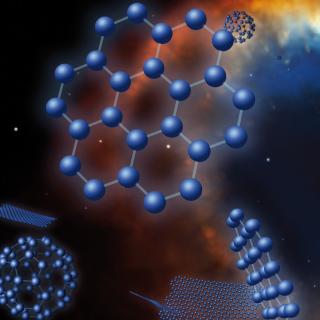Bibcode
Dobrinčić, Martina; Villaver, Eva; Guerrero, Martín A.; Manchado, A.
Referencia bibliográfica
The Astronomical Journal, Volume 135, Issue 6, pp. 2199-2211 (2008).
Fecha de publicación:
6
2008
Número de citas
21
Número de citas referidas
21
Descripción
We present the kinematics of a sample of bipolar planetary nebulae (PNs)
which cover a wide range of observed morphologies and collimation
degrees, from bipolar PNs (BPNs) with a marked equatorial ring and wide
lobes to highly collimated objects. We use an empirical model in order
to derive the expansion velocity, collimation degree, and inclination
angle of the PN with respect to the plane of the sky. The equatorial
expansion velocities measured in the objects in our sample are always in
the low-to-medium range (3-16 km s-1), while their polar
expansion velocities range from low to very high (18-100 km
s-1). None of the objects in our sample, even those that show
an extreme collimation degree, seem to be (kinematically) younger than
sime103 yr. We compare our results with the state-of-the-art
theoretical models for the formation of BPNs. We find good agreement
between the observed expansion velocities and numerical models that use
magnetic fields with stellar rotation as a collimation mechanism.
Proyectos relacionados

Nucleosíntesis y procesos moleculares en los últimos estados de la evolución estelar
Las estrellas de masa baja e intermedia (M < 8 masas solares, Ms) representan la mayoría de estrellas en el Cosmos y terminan sus vidas en la Rama Asintótica de las Gigantes (AGB) - justo antes de formar Nebulosas Planetarias (NPs) - cuando experimentan procesos nucleosintéticos y moleculares complejos. Las estrellas AGB son importantes
Domingo Aníbal
García Hernández